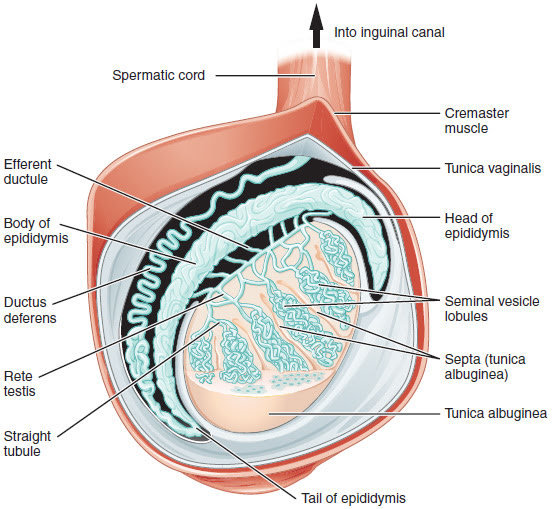- Testicular Self-Exam: A Crucial Habit for Early Detection
- Why is Testicular Self-Exam Important?
- How to Perform a Testicular Self-Exam
- Common Barriers and Misconceptions
- Increasing Awareness and Self-Efficacy
- Conclusion
Testicular Self-Exam: A Crucial Habit for Early Detection
Performing a testicular self-exam (TSE) is an essential practice for early detection of testicular cancer. Although testicular cancer is relatively rare, it primarily affects young men between the ages of 15 and 35, making awareness and early detection crucial. By incorporating regular self-exams into your routine, you can significantly increase the chances of catching any abnormalities early, leading to more effective treatment and better outcomes.
Why is Testicular Self-Exam Important?
Testicular cancer, despite being one of the most treatable cancers when detected early, often goes unnoticed due to a lack of awareness and routine self-examinations. According to a study, a significant percentage of young men rarely or never perform TSE, which highlights the need for increased education and awareness. Regular TSE can help men identify any unusual changes or lumps in their testicles, which are often the first signs of cancer.
How to Perform a Testicular Self-Exam
Performing a TSE is a straightforward process that takes only a few minutes. Here’s a step-by-step guide on how to perform a self-exam effectively:
- Warm Shower: Start by taking a warm shower to relax the scrotum, making it easier to feel any abnormalities.
- Examine Each Testicle: Gently roll each testicle between your thumb and fingers. It’s normal for one testicle to be slightly larger or to hang lower than the other.
- Check for Lumps: Feel for any lumps, bumps, or unusual features. Testicular cancer lumps are typically painless.
- Note Changes: Pay attention to any changes in size, shape, or consistency of your testicles over time.
- Other Symptoms: Be aware of any dull ache or heaviness in the lower abdomen or scrotum.
If you notice any irregularities, it is crucial to consult a healthcare provider immediately for further evaluation.
Common Barriers and Misconceptions
Several barriers prevent men from performing regular TSE. These include a lack of knowledge about the importance of TSE, fear of finding something abnormal, and uncertainty about how to perform the exam correctly. Additionally, societal attitudes and misconceptions about masculinity and health can discourage men from taking proactive steps in their health care.
Increasing Awareness and Self-Efficacy
Improving self-efficacy among men regarding TSE is vital. Educational programs and campaigns can play a significant role in this. For instance, incorporating TSE education into school health curricula and public health initiatives can increase awareness and encourage more men to perform regular self-exams. Furthermore, healthcare providers should actively discuss TSE with their patients, particularly those at higher risk due to factors such as a family history of testicular cancer or previous history of undescended testicles.
Conclusion
Testicular self-exam is a simple yet effective method for early detection of testicular cancer. By incorporating regular self-exams into your routine, you can take an active role in monitoring your health and catching potential issues early. Education and awareness are key to overcoming the barriers and misconceptions surrounding TSE. Remember, early detection is crucial, and a few minutes each month can make a significant difference.
Sources
Public awareness of testicular cancer and testicular self-examination in academic environments: a lost opportunity:
https://www.scielo.br/j/clin/a/m3KyDRgxXSYmRQCT7WWhPCr/?lang=en
USPSTF Testicular Examination Nomination–Self-Examinations and Examinations in a Clinical Setting:
https://journals.sagepub.com/doi/full/10.1177/1557988318768597
Testicular Self-Examination in Young Adult Men:
https://sigmapubs.onlinelibrary.wiley.com/doi/abs/10.1111/j.1547-5069.2002.00251.x
Early detection of testicular cancer: revisiting the role of self-efficacy in testicular self-examination among young asymptomatic males:
https://link.springer.com/article/10.1007/s10865-010-9262-z
Off-Label” Usage of Testicular Self-Examination (TSE): Benefits Beyond Cancer Detection:
https://journals.sagepub.com/doi/full/10.1177/1557988315584942
Perceptions of Testicular Cancer and Testicular Self-Examination Among College Men: A Report on Intention, Vulnerability, and Promotional Material Preferences:
https://journals.sagepub.com/doi/full/10.1177/1557988311409023
Development of the self-efficacy for testicular self-examination scale:
https://www.sciencedirect.com/science/article/abs/pii/S157189130400192X
Testicular Self-Examination in an Adult Community Sample:
https://journals.sagepub.com/doi/abs/10.1177/1557988310361520
Foto: By OpenStax College – Anatomy & Physiology, Connexions Web site.
https://en.wikipedia.org/wiki/Testicle#/media/File:Figure_28_01_03.JPG

